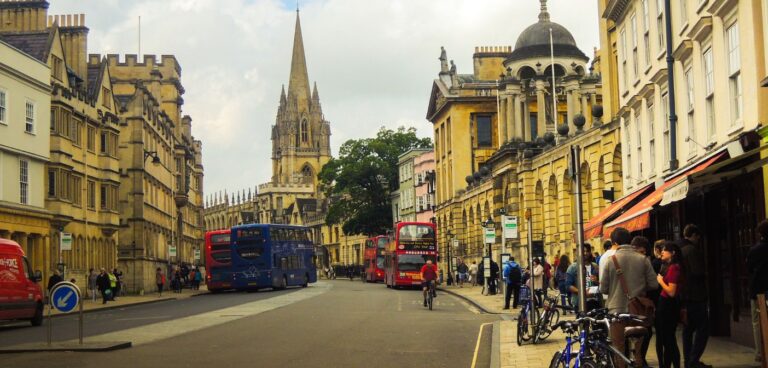Oxford City Council has set out plans to exceed the current legal target for air pollution to improve the health of those living, working, and visiting Oxford.
It is believed that Oxford City Council will become the first UK local authority to set out a city-wide air pollution reduction target within its draft Air Quality Action Plan, which seeks to go further than the legal annual mean limit value for NO2 of 40 µg/m3, with a new local annual mean NO2 target of 30 µg/m3 by 2025.
Oxford has seen an average reduction of 26% in NO2, 31% in Particulate Matter (PM10) and 36% in Particulate Matter (PM2.5) at sites where air quality monitoring has been in place since 2013.
The new Air Quality Action Plan 2021-2025 outlines the actions that the council will take to improve air quality in the city of Oxford between the years 2021 to 2025, building on its previous Air Quality Action Plan.
Councillor Tom Hayes, deputy leader of Oxford City Council and cabinet member for green transport and zero carbon Oxford, said: “Through the city council’s measures we have helped to reduce the most concerning air pollutant by 26% over the last seven years. We need to go further and faster to clean air and stronger public health – as such Oxford City Council is setting a new Air Quality Action Plan which, for the first time, sets a target for the reduction of air pollution, indeed a significantly stricter target than the government’s own target.
“We believe that it is the first time any UK local authority has set a city-wide air pollution reduction target while discharging the statutory duty to create an action plan. By setting a stricter target than the government’s own target, we believe we are doubling down on our commitment to clean air, public health, and social justice.”
The target of 30 µg/m3 by 2025 is reportedly based on evidence, including an analysis of Oxford’s historic air quality monitoring data from 2002 to 2018, air quality modelling projections and studies, and the expected impact of the measures proposed in the draft Air Quality Action Plan.
According to the council, the new local target mean does not override any legal targets set by central government, but sets out a target that the city aims to achieve.
The plan sets out 30 actions and measures for the council to deliver with its partners across four priority areas:
- Developing partnerships and public education;
- Support for the uptake of low- and zero-emission vehicles;
- Reducing emissions from domestic heating, industry and services
- Reduce the need to travel, explore opportunities for mode shift and increase the uptake of sustainable transport
The main priorities for the period 2021-2025 are focused on the delivery of Oxford’s Zero Emission Zone (ZEZ) and Connecting Oxford – two major schemes that have been developed to tackle road traffic emissions and the dominance of the car on roads.
The Air Quality Action Plan is said to build upon these proposals and identifies new measures to accompany them. Accompanying measures include continuing to work with schools to raise awareness of air pollution and active travel, introducing a Euro VI low-emission zone for buses, expanding the council’s EV fleet, delivering the £41m Energy Superhub Oxford, and more.
Currently, diesel cars contribute to 33% of NOx emissions in Oxford, and buses to 32% emissions. However, after the conversion of all buses to Euro VI through the proposed low-emission zone, the council has predicted that NOx emissions from buses will decrease, with an estimated 40.6% decrease in bus emissions at St Clement’s – Oxford’s most polluted street.
The Air Quality Action Plan and the new local target will be subject to an annual review and each year progress will be reported in annual status reports.
The plan is to be presented to the council’s scrutiny committee on 1 September, and will be discussed by the council’s cabinet on 9 September.
The public consultation on the document will also begin in September.





